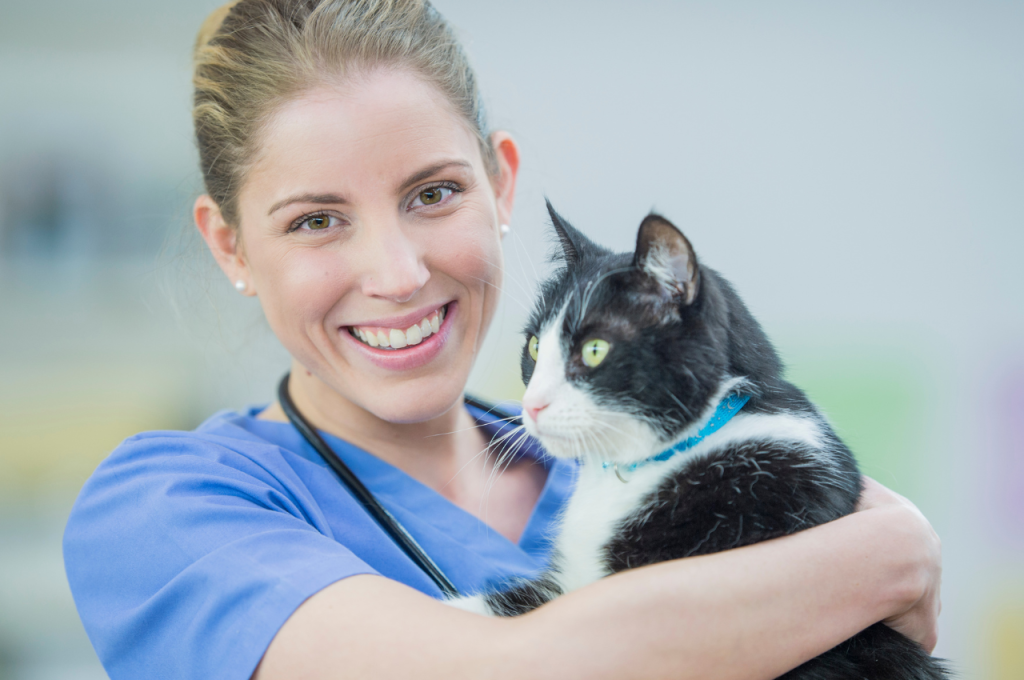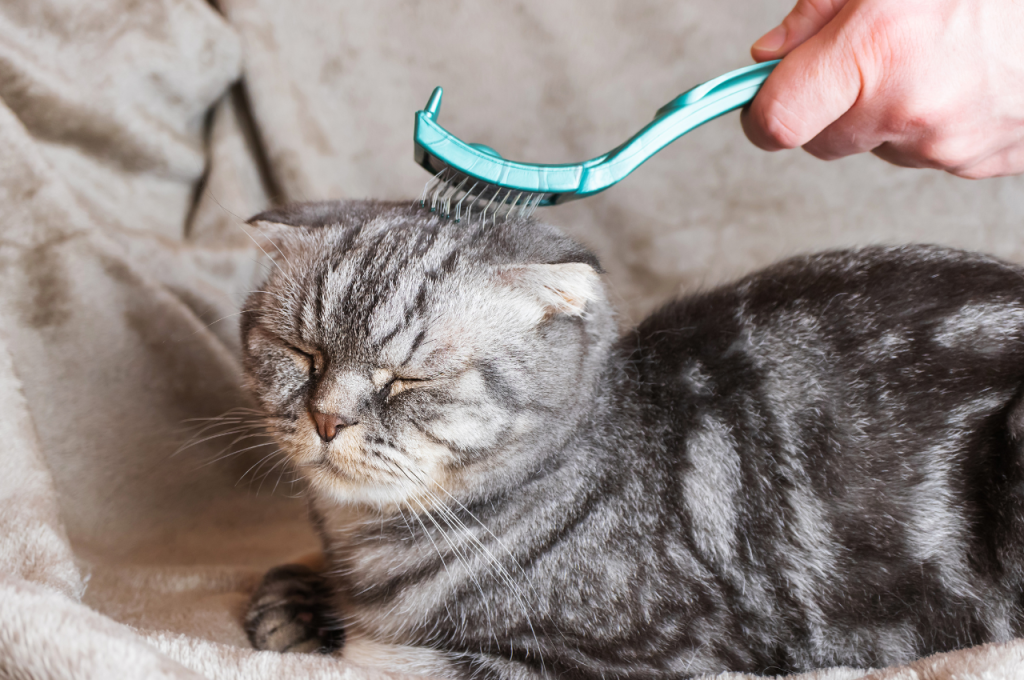A cat’s hygiene routine involves regular grooming, nail trimming, ear cleaning, and dental care. These practices help maintain your cat’s health and well-being, preventing issues like matting, ear infections, and dental problems.
Proper hygiene also reduces shedding and minimizes hairballs, keeping your cat comfortable and happy. Additionally, grooming sessions provide an opportunity to bond with your feline friend and monitor their overall health. By establishing a consistent hygiene routine, you can ensure that your cat looks and feels their best while promoting a strong bond between you and your pet.
Introduction To Feline Hygiene
Maintaining a hygiene routine for cats is essential for their health and well-being. Regular grooming, including brushing their fur, trimming nails, and cleaning their litter box, helps prevent infections and keeps them comfortable. Paying attention to their dental hygiene and providing a balanced diet also contributes to overall feline cleanliness.

The Importance Of Grooming
Grooming is an essential part of a cat’s hygiene routine. Regular grooming not only keeps your feline friend looking their best, but it also helps maintain their overall health and well-being. Cats are known for their meticulous self-grooming habits, but they still require some assistance from their owners to ensure their hygiene needs are met.
Proper grooming helps prevent the formation of mats, which can be uncomfortable and even painful for your cat. It also helps to remove loose hair, reducing the amount of hair they ingest while grooming themselves, which can lead to hairballs. Regular brushing can minimize shedding and keep your home free from excess fur.
In addition to keeping your cat’s coat clean and free from tangles, grooming also allows you to check for any skin abnormalities, such as rashes or sores, that may require veterinary attention. It also gives you the opportunity to examine their ears, teeth, and nails, ensuring they are healthy and well-maintained.
Understanding Your Cat’s Needs
Every cat is unique, and their grooming needs may vary based on factors such as breed, age, and coat length. Some cats may require daily brushing to prevent matting, while others may only need it a few times a week. It’s important to understand your cat’s individual needs and tailor their grooming routine accordingly.
While most cats are adept at grooming themselves, some may require additional assistance. Long-haired breeds, for example, may need more frequent brushing to prevent their fur from becoming tangled. Older cats or those with certain medical conditions may benefit from regular grooming to prevent skin issues or discomfort.
It’s important to introduce grooming gradually and make it a positive experience for your cat. Use gentle brushes or combs specifically designed for cats, and reward them with treats or praise during and after each grooming session. This will help create a positive association with grooming and make it easier for both of you.
Starting A Hygiene Routine
Assessing Your Cat’s Grooming Behavior
Observe how your cat grooms itself to identify any areas it may be neglecting. Look for signs of matting, dirt buildup, or overgrown claws. By doing this, you can determine which grooming tasks are essential for your cat’s well-being.
Creating A Schedule
Develop a regular grooming schedule based on your cat’s needs and habits. Consider factors such as age, breed, and coat type when determining how frequently your cat should be groomed. Establishing a routine will help your cat become accustomed to grooming and make the process more manageable for both of you.
Coat Care And Bathing
Maintaining a regular hygiene routine for your cat is essential for their well-being. Brushing their coat regularly to remove loose hair and prevent matting, along with occasional bathing, can help keep your feline friend clean and healthy. Remember to use cat-friendly grooming products and consult with a veterinarian for specific care recommendations.
Taking care of your cat’s coat is an essential part of their hygiene routine. Regular brushing helps to keep their fur clean, and free from tangles and reduces shedding. However, when it comes to bathing, it is important to consider whether your cat actually needs a bath. Cats are known for their grooming habits and are generally able to keep themselves clean. Nevertheless, there are situations where a bath may be necessary, such as if your cat gets into something dirty or sticky.
Brushing Techniques
Brushing your cat’s fur not only helps to remove dirt and debris but also prevents the formation of mats and hairballs. When brushing your cat, it is important to use the right technique to ensure their comfort. Start by choosing the right brush for your cat’s coat type. For short-haired cats, a rubber brush or a grooming mitt works well, while long-haired cats may require a slicker brush or a comb with wider teeth. To brush your cat, gently stroke their fur in the direction of hair growth. Start from the head and work your way towards the tail. Use short, gentle strokes, and be mindful of any sensitive areas. If you encounter any tangles or mats, use your fingers or a comb to carefully untangle them.
Remember to praise and reward your cat throughout the process to create a positive association with brushing.
To Bathe Or Not To Bathe
While some cats may tolerate baths, others may find the experience stressful. It is important to assess whether your cat actually needs a bath before proceeding. Most cats are capable of cleaning themselves effectively, and frequent bathing can strip their fur of essential oils, leading to dryness and skin irritation. However, there are situations where a bath may be necessary, such as when your cat has come into contact with toxic substances or if they have a skin condition that requires treatment. If you determine that a bath is necessary, here are a few tips to make the experience as smooth as possible:

- Choose a cat-specific shampoo that is gentle on their skin.
- Fill the tub with a few inches of lukewarm water before placing your cat in it.
- Use a handheld sprayer or a cup to wet your cat’s fur, avoiding their face and ears.
- Gently massage the shampoo into their fur, starting from the neck and working your way down.
- Rinse thoroughly to ensure all the shampoo is removed.
- Wrap your cat in a towel and gently pat them dry, avoiding vigorous rubbing.
- Offer treats or praise to reassure your cat and make the experience more positive.
Remember, it is important to consult with your veterinarian before bathing your cat, especially if they have any underlying health conditions or if you are unsure about the appropriate bathing frequency for your cat’s specific needs.
Dental Health Practices
Maintaining a proper dental hygiene routine for cats is essential. Regular brushing, using cat-friendly toothpaste, and providing dental treats can help prevent dental issues and keep their teeth clean and healthy.
Choosing The Right Toothbrush
When selecting a toothbrush for your feline friend, opt for a small, soft-bristled brush specifically designed for cats. Avoid using human toothbrushes as they can be too abrasive for your cat’s delicate gums. The bristles should be gentle enough to not cause discomfort, and the size should be suitable for your cat’s mouth.
Consider the handle too; it should offer a comfortable grip to ensure ease of use during the brushing process. Look for toothbrushes with angled heads, as they can help reach the back teeth more effectively. Additionally, some toothbrushes feature a dual-ended design with a smaller brush on one end and a larger one on the other, catering to different mouth sizes.
The Art Of Brushing A Cat’s Teeth
Introducing a dental care routine for your cat may take time and patience, but it’s essential for their overall health. Begin by getting your cat accustomed to having their mouth touched. Start by gently stroking their gums and teeth with your finger, gradually progressing to using a toothbrush. Be gentle and patient, and reward your cat with treats and praise to create a positive association with the process.
When it comes to actually brushing your cat’s teeth, it’s crucial to use toothpaste specifically formulated for cats. Human toothpaste can be harmful if swallowed, so always opt for feline-friendly options with flavors like poultry or seafood that appeal to cats. Squeeze a pea-sized amount onto the toothbrush and start brushing in gentle, circular motions, focusing on the gum line and outer surfaces of the teeth.
Nail Clipping And Paw Care
Nail clipping and paw care are essential aspects of a cat’s hygiene routine. Regular attention to these areas helps to prevent discomfort and potential health issues for your feline friend.
Safe Nail Trimming
Cats’ nails can become overgrown, leading to discomfort and potential injury. It’s important to trim their nails regularly to prevent this. Use specialized cat nail clippers to avoid causing pain or damage to the nails. If you’re unsure about how to trim your cat’s nails safely, consider seeking guidance from a professional groomer or veterinarian.
- Use specialized cat nail clippers
- Trim nails regularly to prevent discomfort
- Seek guidance if unsure about the process
Paw Inspection And Cleaning
Regularly inspecting and cleaning your cat’s paws is crucial for maintaining their overall health and comfort. Check for any signs of injury, irritation, or foreign objects that may be lodged between the paw pads. Use a damp cloth to gently clean their paws, and ensure that there are no wounds or abrasions that require attention.
- Regularly inspect and clean your cat’s paws
- Check for signs of injury or irritation
- Gently clean with a damp cloth
Eye Care
Maintaining a good hygiene routine for your cat’s eye care is essential. Use a soft, damp cloth to gently wipe away any discharge from the eyes. Regularly check for any signs of redness, swelling, or unusual discharge, and seek veterinary advice if necessary.
Spotting Eye Issues Early
- Regularly check your cat’s eyes for any abnormalities.
- Look for redness, discharge, or squinting.
Cleaning Your Cat’s Eyes
- Use a soft, damp cloth to gently wipe away any discharge.
- Never use harsh chemicals or soaps on your cat’s eyes.
Litter Box Hygiene
Cats are meticulous animals that value cleanliness, especially when it comes to their litter box. Proper litter box hygiene is crucial for your cat’s health and well-being. It involves choosing the right litter and maintaining a clean environment.
Choosing The Right Litter
When selecting litter for your cat’s litter box, opt for clumping or non-clumping litter based on your cat’s preference. Ensure the litter is dust-free and unscented to avoid irritation.
Maintaining A Clean Environment
- Scoop the litter box daily to remove waste.
- Change the litter completely every 1-2 weeks.
- Wash the litter box with mild soap and water regularly.
- Avoid using harsh chemicals that may be harmful to your cat.
Professional Grooming Vs. Home Care
Cats thrive on cleanliness, making a hygiene routine essential for their well-being. When it comes to maintaining your feline friend’s hygiene, you have two main options: professional grooming and home care.

When To Seek Professional Help
- If your cat has a long or thick coat that requires regular trimming
- When your cat struggles with matting or shedding issues
- In case of skin problems or unusual changes in your cat’s coat
Benefits Of Regular Home Grooming
- Strengthens the bond between you and your cat
- Helps detect any health issues early on
- Reduces shedding and minimizes hairballs
Conclusion
Taking care of your cat’s hygiene is essential for their health and well-being. A hygiene routine for cats should consist of regular grooming, cleaning their litter box, and keeping their environment clean. This not only helps prevent illnesses but also strengthens the bond between you and your feline friend.
By following these simple steps, you can ensure your cat is happy, healthy, and always looking their best. Start implementing a hygiene routine for your cat today and watch them thrive!
